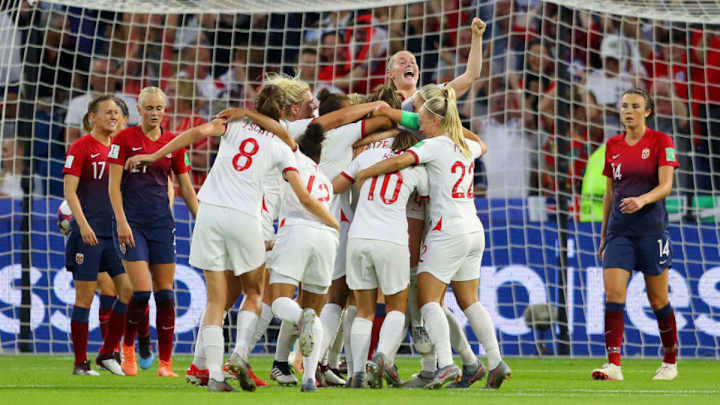UEFA Publishes Funding Figures for Women's Football in Europe & Underlines Commitment to the Game

UEFA has published the numbers behind its commitment to the growth of women's football in Europe, both in terms of what has already been achieved and looking ahead to the future.
All but one of the quarter finalists for the 2019 Women's World Cup were from Europe - France, England, Norway, Italy, Netherlands, Germany, Sweden - in a show of continental dominance that had never previously been seen at the global level.

UEFA's biggest help to the women's game in Europe has been through increased funding.
The governing body's women's football development programme (WFDP) has been running since 2012 and gives €100,000 to each national association every year specifically to aid the growth of women's football. That annual amount will rise to €150,000 per association from 2020.
The WFDP also further helps individual countries with their specific needs and has funded 459 applications with €82.2m across all 55 UEFA member associations.
UEFA estimates that more than half of the applications, accounting for €31m of the funding, have focused on grassroots projects that create opportunities for girls and women to play.

€12m has been invested into 94 club and league development projects, specifically targeting improving professionalism and administrative capabilities, while another €13.5m, across 78 projects, has helped national associations enhance elite youth pathways, coaching and development - in particular producing a higher standard at the top of the women's game.
UEFA has also aimed to change perceptions of the women's game, particularly through the 'Together #WePlayStrong' campaign that was launched in June 2017. There are currently 1.3m girls and women playing for clubs across Europe, but the target is to reach 2.5m by 2024.
On top of that, the HatTrick project has been funded by European Championship revenue since 2004 and will have seen €1.8bn invested into general football infrastructure and projects across Europe at all levels, including grassroots, women's and elite youth development.
As interest increases, so does professionalism.
— UEFA (@UEFA) July 1, 2019
Five countries broke domestic club attendance records in 2018/19 💥
Almost every European nation now has a domestic league, with a 50% hike in the number of active professional players in Europe compared with 2017 👏 pic.twitter.com/DRZYZHBKXE
As part of the current cycle (2016-2020), €610.5m is being distributed to all 55 member associations, with more than 70% invested to upgrade infrastructure, including pitches, stadia and national training centres that will crucially improve access to football for everyone.
"The potential for women's football is limitless and, with this in mind, UEFA has taken the step of increasing the funding available to the national associations to help improve the women's game across the continent," said UEFA President Aleksander Čeferin.
"Increasing the participation and the role of women in football has been one of my main objectives, both before and after I became UEFA president."
The Women's Football Development Programme ensures that money is also spent on specific projects that benefit the women's game.
— UEFA (@UEFA) July 1, 2019
So far, the WFDP has funded 459 applications to the tune of €82.2m across all 55 UEFA associations. pic.twitter.com/kBmC8Nsj3K
Nadine Kessler, UEFA head of women's football and three-time UEFA Women's Champions League winner, said:
"It's just great to see that football has become a more natural choice for girls - which means we are on the right track of changing perceptions around the world - and that efforts to make the sport more accessible are paying off.
"All I ever wanted was to be a footballer, so it fills me with pride that more and more girls feel the same. There's no real reason why girls shouldn't fall in love with the game the same way boys do."
